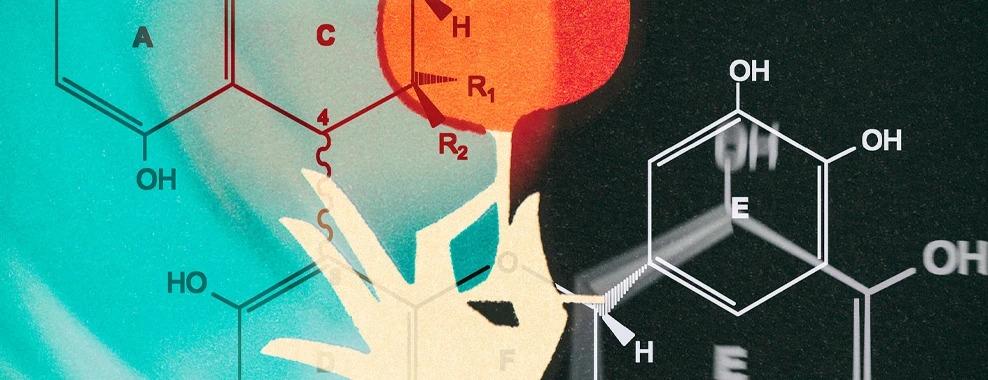Technical Articles

Symptoms:
If you have ever had a hot cup of Earl Grey tea or a cool iced tea, the distinct brownish color of the product comes from tannin. It may be desirable in tea, but not in water. Tannins can cause a yellow to brown cast in water and may also impart a taste and odor
Causes:
Tannins are formed upon the decomposition of vegetation. These compounds are large molecular weight organics that fall under two large primary categories: Humic acids and Fulvic acids. The structure of the tannin varies, depending on the plant life in a given area.
Health Concerns:
Tannins are not a health problem but are rather an aesthetic problem due to massive amounts of color in the water supply.
Action Level:
Any level of tannin is undesirable. The structure of the tannin varies, depending on the plant life in a given area. Tannins can cause a yellow to brown cast in water and may also impart a taste and odor. They will generally be found in surface water supplies or shallow wells. Although these compounds are not a health risk, they are aesthetically displeasing.
More Information:
Tannins are difficult to remove from water. One treatment method may be effective in one area, but may be totally ineffective 10 miles down the road. It is all dependent on the vegetation in a given area. Styrene based macroporous anion resin has long been used to remove tannins from water. This type of resin has worked well in some areas but poorly in others. More recently, acrylic based resins have emerged on the market and are producing better results when removing tannins from water. The acrylics are manufactured with a macroporous structure. The additional porosity enables the tannins to be regenerated from the resin more effectively.
Application:
It is usually recommended that the water be treated by a softener prior to the tannin removal unit. The softener removes hardness and metals. It should be noted, that tannins will pass through softening resin (cation resin) without any detrimental effects. Hardness levels greater than 10 grains passing into the tannin unit may precipitate calcium carbonate. This is a white precipitate that will restrict flow through the unit. Metals like iron can also foul the anion resin, reducing the anions ability to remove tannins.
The removal of tannins via anion resins occurs through both an ion exchange process and an absorption process. Tannins have a slight negative charge. Because of this, they are exchanged for chloride onto the anion resin. Organics will also be absorbed by the anion resin. Tannins will tend to migrate into the inner matrix of the anion resin. Once this occurs, it is very difficult to regenerate the tannins from the resin. Since an anion resin is being used to remove tannins, it will also remove other negatively charged anions. Alkalinity will be removed during the initial part of the service cycle. With the reduction in alkalinity, a corresponding decrease in pH will occur. Once the resins’ capacity for alkalinity has been reached, the pH will ultimately go back to its original level. Nitrates are also frequently removed by tannin removal resin.
Salt is used to regenerate the anion resin. Generally, the resin will be brined at 10 lbs per cubic foot. Most importantly, this regeneration should be performed every two to three days. Frequent regeneration will reduce the likelihood of organic fouling. Longer regeneration intervals will promote organic fouling, whether the anion is an acrylic or styrene based resin.
Frequently, tannin resin is mixed with softening resin. This reduces the amount of space required by the equipment and reduces the cost of the equipment. This type of design has performed satisfactorily when properly designed. If a unit is backwashed at a flowrate typical for cation resin, the anion resin can be backwashed out of the unit. An upper screen or basket can be used to eliminate the loss of tannin resin. Improper design can also lead to pressure drop and higher hardness leakage. This is due to calcium carbonate precipitation during the regeneration process. US Water has tannin and cation water softeners in one tank and the cation resin is in the top chamber while the tannin resin is in the bottom chamber (pictured at right).
Cleaning Methods:
If organic fouling occurs, soda ash can be added to the brine (~1 lb-per regeneration). Soda ash will convert some of the resin to the carbonate form, which will cause the resin to swell. This swelling will make the pores of the resin slightly larger, so that more of the tannins can be eluted from the resin. The soda ash will also increase the pH of the salt. Tannins become more soluble in higher pH environmental conditions. Finally, with a portion of the anion in the carbonate form, the pH reduction that would normally occur during the service cycle, will be less.
One draw back to this treatment is the potential for a fishy odor. The anion resins (Type 1) are functionalized with trimethylamine (TMA). Under high pH conditions the TMA that is released by the resin can produce a fishy odor. Unfortunately, it only requires approximately 1 part per billion (ppb) of TMA to cause a fishy odor. The odor will generally dissipate over a period of time. When the manufacturer properly post treats resin after it is made, the resin will generally lose its odor quickly, usually within a regeneration or two. It should be noted that a macroporous anion resin will generally clean-up faster and easier than gel type anion resins.
Treating water with a pH greater than 8 also increases the potential for fishy odor. When treating water with a high pH, there is really no good way to eliminate the odor. Putting the resin through several regenerations and exhaustion cycles should reduce the fishy odor. Probably the worst case scenario for fishy odor will occur when there is both high pH and chlorine. As chlorine ‘degrades the tannin resin, the combination of these by-products and high pH produce the fishy odor that may never completely go away. Chloroamines will generally produce this type of environment. The use of soda ash with salt should only be used on anion resin. Passing soda ash through a cation resin may precipitate calcium carbonate.
Organic fouling that occurs in industrial applications can be treated with a brine/caustic clean-up procedure. Separate solutions of brine and caustic (sodium hydroxide) are passed through the bed of anion resin. This causes the resin to shrink and swell to its greatest degree, helping to push the tannins from the inner matrix of the bead. This procedure can be used in residential applications, if the technician is experienced in this process.
Once this treatment is performed, the resin must be converted completely back to the chloride form. If the conversion is incomplete, the effluent pH will be very high. This treatment method should not be performed on cation resin, unless it has been fully regenerated to the sodium form. Metal precipitates will readily form if the cation is not fully regenerated. The brine/caustic cleaning procedure should not be performed by the home owner.
If the previous procedures are unable to clean the anion resin, a bleach solution can be used as a last resort. Place 4 ounces of a standard household bleach, without detergent, (approximately 5.25%) into the brine well. Start-to regenerate the resin. When the chlorine odor can be detected in the spent brine, shut the system down for 2 hours, then continue the regeneration to completion. Put the system through a standard regeneration before putting the system back online. This procedure is very hard on the resin and should only be performed when nothing else works. If this treatment does not work, the resin will have to be replaced.
Iron is probably the chief culprit when it comes to metal fouling. Iron can be stripped from the bed using a reducing agent such as sodium bisulfite or sodium hydrosulfite. Do not use a cleaning agent containing any organic cleaners, as these may foul the anion resin. Calcium carbonate precipitation occurs as a milky white sludge. When this occurs, pressure drop and channeling may result and elevated hardness leakage may also be realized. A mild acid such as phosphoric acid will dissolve the precipitate. Once this procedure is performed, a complete regeneration with salt is recommended.

Other Methods:
Oxidizing agents such as Chlorine and ozone are effective at breaking down tannins. A simple jar test will show the concentration and retention time required to oxidize the tannins. An activated carbon unit following the retention tank will remove the oxidant and adsorb any additional organic compounds in the water. It should be noted that some activated carbons alone may not have a significant amount of capacity for tannins. Consult your carbon manufacturer for the appropriate type of carbon. Reverse osmosis is another effective method of removing tannins. Since tannins are high molecular weight organics, R/O will reject them very effectively. When treating for tannins, there is no method that is 100 % effective. A treatment method that works well in one area may be ineffective in another area. Once a treatment method is found to be viable in a given area, it is best to stick to that technology.
THE RIGHT SOLUTION FOR YOU
Contact us today for more information about our products and services.
CONTACT US
